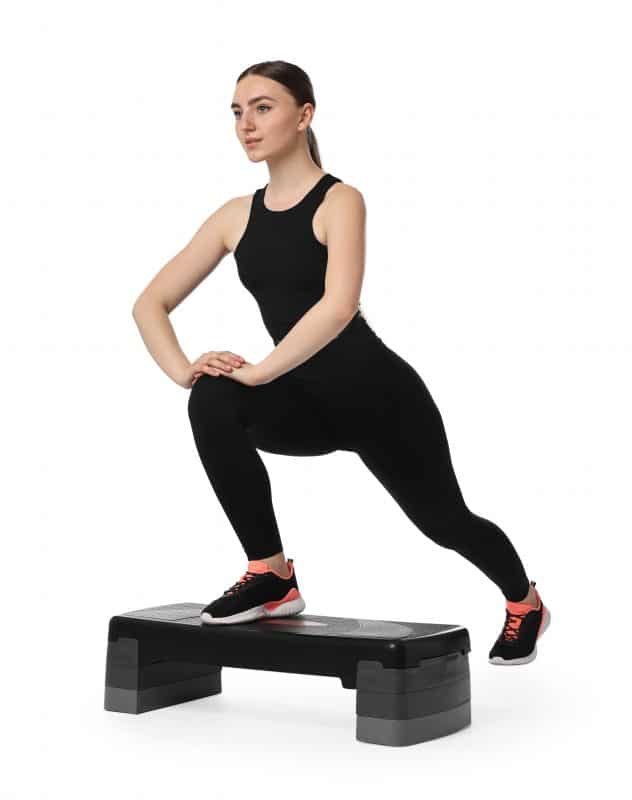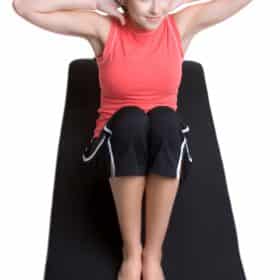WHAT IS THE CHESTER STEP TEST?
The Chester Step Test is an effective way to assess a person’s fitness levels by determining the rate of recovery following intense exercise. The test itself is called a sub-maximal test which requires the candidate to step up onto a step which is 30 cm (12 inches) in height. Once on the step with both feet the candidate will then step back off the step before repeating the movements in time with a metronome which is supplied as part of the Chester Step test package. The Chester Step test is multi-staged which means that, with each level of increase, the speed in which the candidate has to step up and off the step increases. The pack comes complete with a chart and graph which is used to determine the level of fitness in line with each stage progressed to.
THE CHESTER STEP PROCEDURE
- To begin, with the heart rate monitor will be attached to you in line with the manufacturer’s instructions. You will then be given instructions by the test administrator on how to carry out the test, including a brief demonstration.
- The Chester Step Test Software will then commence and it will be the candidates’ task to continue stepping for a total of 2 minutes.
- After the first 2 minutes, which is called stage 1, you will stop and the administrator will assess your heart beat in line with the chart or graph.
- Providing your heart rate is below 80% of your maximum heart rate and the RPE is below 14 at the end of the first stage you will then be permitted to continue on to stage 2 which consists of 20 steps per minute. You’ll be asked to continue stepping at the slightly faster rate in stage 2 (20 steps/min).
- Once again, after another 2 minutes elapses your heart rate will be taken.
- Providing your heart rate is below 80% of your maximum heart rate and the RPE is below 14, you’ll be asked to continue stepping at the slightly faster rate is stage 3 (25 steps/min).
- The test will continue until either you report an RPE greater than 14 and/or an exercise heart rate greater than 80% of your maximum heart rate (stage 4 = 30 steps/min, stage 5 = 35 steps/min).
NEW – Chester Aerobic Test (CAT) Software – USB
Now available is an updated version of the Chester Step Test software.
The following benefits and features are included in addition to the original version:
- Integrated metronome audio
- Built in dynamic RPE scale
- BMI and Subject Fitness Calculation
- Max HR Formula’s specific to age groups e.g. Tanaka
- PAR-Q Physical Activity Readiness Questionnaire
- Pre-Test Conditions Questionnaire
- Report with dynamic norms table for results
- Full PDF reporting
The software will be available on a USB stick and works on any PC that it is plugged into – previously locked to one computer. It is compatible with Windows 7 onwards.

ABOUT THE ‘CHESTER STEP TEST’
The great advantage of the ‘Chester Step Test’ is that you can change the step height for different participants. The ‘Chester Step Test’ height ranges between 0.15 to 0.30 metres depending on the person whom you are assessing – there are standardised criteria for choosing a step height based on the subject’s age and physical activity history. The initial step rate is 15 steps per minute and every 2 minutes the tempo increases by 5 steps per minute. This test is used by the following services as a tool for measuring a potential candidate’s ability for the job prior to entry at the medical stage:
- UK Police Forces (both police officer selection and PCSO).
- The British Fire Service for fire-fighter selection.
- The British Army for regular soldiers and officer’s.
- The Royal Marines.
- The Prison Service for assessing entry for prison officers.
In addition to this the ‘Chester Step Test’ is a fantastic tool for measuring your own fitness and it will go a long way to improving your fitness all year round. The great thing about it is that you can carry out the test at home. It only takes 5 minutes for you to really feel the test pushing you. The ‘Chester Step Test’ was developed by Kevin Sykes while at Chester College, hence the term ‘Chester’.



